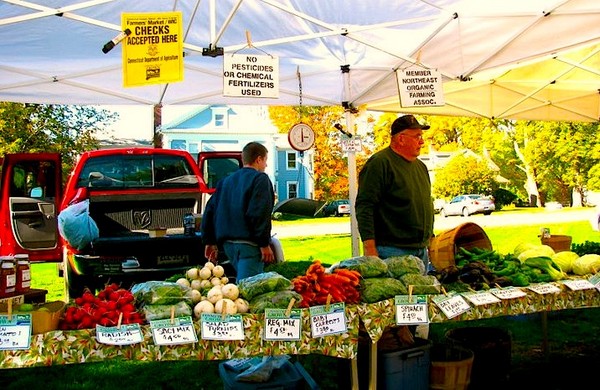 On Monday, Strolling of the Heifers released its second annual Locavore Index, which ranks the 50 states and the District of Columbia for their commitment to local foods, rating them for the availability and consumption of locally produced foods in their state.
On Monday, Strolling of the Heifers released its second annual Locavore Index, which ranks the 50 states and the District of Columbia for their commitment to local foods, rating them for the availability and consumption of locally produced foods in their state.
Strolling of the Heifers, the Vermont-based advocacy group, assesses the number of farmers markets, consumer-supported agriculture programs (CSAs) and food hubs in its per-capita comparison of consumers’ interest in eating locally-sourced foods—also known as locavorism.
Vermont, Maine, New Hampshire, North Dakota and Iowa were the top five states in the 2013 index. California, on the other hand, which has more than 800 markets—the most in the country—came in 42nd.
Index coordinator Martin Langeveld explained to TakePart, “A state that is significantly urbanized will be at somewhat of a disadvantage.” There is a rural-state bias that results when considering local food systems in relationship to population.
Langeveld said that the real reason the locavore ranking is done is to let everyone compare the local food systems that exist around the country, and to “provide a little incentive to get people thinking about it.”
“Right now, reliable state-by-state data about local food consumption is pretty scarce,” said Langeveld in a press release. He told TakePart, “There just aren’t good, consistent metrics that are comparable across all 50 states.”
Last year, the ranking system was based primarily on United Sates Department of Agriculture (USDA) data from 2007. With the upcoming release of the 2012 Census of Agriculture, conducted every five years, 2014 will include plenty new data from which to draw. This year, in addition to using data from the USDA and the U.S. Census Bureau (July 2012 estimates of population, Strolling of the Heifers had to turn to the website Local Harvest for CSA numbers. Data on food hubs was also used for the first time.
Food hubs are either non-profit or for-profit networks that allow regional growers to collaborate on local food aggregation, marketing and distribution. This allows individual farmers and food producers to benefit from better efficiencies in getting their products into the hands of consumers. Buying local food encourages the development of local food processing and distribution networks, while encouraging strong community connections between people and the food producers and farmers providing fresh, local food.
“Without food hubs, marketing and distribution of local foods can be challenging to small and midsized farms which lack the infrastructure to handle those function,” said Langeveld. “So the presence of food hubs is an indication that a state or region has tackled this problem and that more locally-sourced food products are being made available.”
Buying locally grown food has a number of other advantages for a community. Getting food from local sources cuts down on the need to ship food long distances, which decreases the use of fuel. The average food item sold in a supermarket travels more 1,500 miles from a farm to the kitchen. Consequently, fruits and vegetables in grocery stores are picked up to a week before they reach markets. Local foods thus have less spoilage, lose fewer nutrients and are more flavorful. A thriving local food market also encourages more consumption of organic foods, reducing the reliance on artificial fertilizers and pesticides.
“A strong local food system creates economic opportunities, preserves the working landscape, serves the nutritional needs of a region, and provides a point of connection for the community,” said Vermont Secretary of Agriculture Chuck Ross in a press release.
See how your state measured up in the Locavore Index here.
For a list of CSAs, farmers markets and food hubs in your area, visit LocalHarvest.org and Food Hub Center.
Leave a Reply